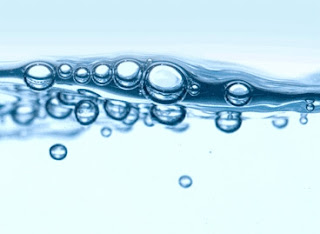After
the success of Razaksat in 2009, Malaysia is going to embark on the second
Razaksat called Razaksat2.
The
Malaysian government has decided to expand the country’s satellite development
programme with an approved allocation ceiling of RM200 million for the Ministry
of Science, Technology and Innovation (MOSTI) to embark on a 5 year RazakSAT-2
programme.
Science,
Technology and Innovation Minister Datuk Seri Dr Maximus Ongkili said on Friday
9th September 2011 in Shah Alam, Selangor that the allocation under the 10th
Malaysia Plan would allow Malaysia to continue with the next phase of the
RazakSAT satellite programme, to be driven by the National Space Agency
(ANGKASA) and Astronautic Technology (M) Sdn Bhd (ATSB).
“The
allocation reflects the government’s commitment in ensuring Malaysia maintains
its world leadership in operating remote sensing satellites in the Near
Equatorial Orbit (NEqO),” he said.
The
RazakSAT-2 programme will be based on home-grown innovation, as a continuity of
the RazakSAT Satellite Programme that was launched on July 14, 2009 which
became a ground breaking epic as the world’s first remote sensing satellite
launched into NEqO.
“Being a
ground breaking effort, the operations of RazakSAT in the NEqO posed
significant challenges. However, RazakSAT engineers, with the Malaysian
innovative spirit, have been able to address most of the challenges, achieving
success with RazakSAT capturing more than 1,000 images to date.
“The images
will be utilised for various applications such as mapping, agriculture, fishery
as well as urban and coastal monitoring,” Dr Ongkili added.
Typically,
satellites for remote sensing have a life span of three years in space.
The
technological scope of development for RazakSAT-2 shall be to upgrade systems
capability, notably for satellite hardware and software.
The
programme will continue to add to Malaysia’s already established in-house
capability to develop space technologies from its present base of having
developed 166 engineers and scientists involved in the programme, with
participation of over 100 local vendors.
The
development cycle will involve the manufacturing of several engineering models
in order to minimise operational risks. RazakSAT-2 is expected to be completed
in 2015.
“The
programme will also enable the national space technology initiative to
strengthen, promote and develop research and development, enhance
commercialisation of geoinformation products and services through comprehensive
R&D activities, as well as training and human capital development,” the
minister said.
An
inter-ministerial committee will be set up, coordinated by MOSTI, to manage and
optimise the resources from the satellite for national use.
“The
expansion of the programme will provide opportunities for Malaysia to export
its expertise, capabilities and sharing of knowledge with the world. This
includes to penetrate the international markets and herald the supply chain
that supports the government’s aspiration to promote innovation,” Maximus
added.
Dr Ongkili
said that space and satellite technology would contribute to the economic
growth and gross national income through its supply chain and employment
opportunities gained as part of the technology spin-off initiatives.
“The
government is fully committed towards enriching the societal wellbeing through
science and technology, specifically in space and satellite technology
development programmes.
“Both
upstream and downstream space activities are required to mature the industry.
The human capital development is essential for the new breed of knowledge
workers while sustaining the existing local talent as part of the “brain gain”
initiative towards Malaysia achieving high income nation status,” added Dr
Ongkili.
Dr Ongkili
said this during a visit to ATSB accompanied by his deputy Datuk Fadillah
Yusof, the ministry’s secretary-general Dato’ Madinah Mohamad and senior
ministry officials. Also present were ATSB chairman Datuk Noraini Ahmad and CEO
Datuk Dr Ahmad Sabirin Arshad.
Source :
Science, Technology and Innovation Ministry, MOSTI





